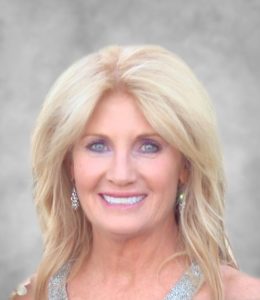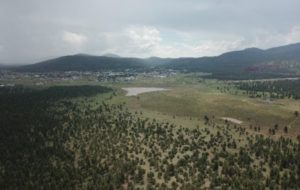Matthew Joseph delivers supplies for rangers, clinics, researchers, campers.
Grand Canyon National Park (GCNP) Animal Packer Matthew Joseph says, “I love it! I get to be in the Grand Canyon, and the mules are the best coworkers you could ever ask for.”
A mule packer feeds and cares for the animals and carefully and strategically sorts out the cargo for transport in packs on the mules’ back. In general, mules can carry 20% of their body weight.
Working and living at the Grand Canyon on and off since 2018, Joseph began wrangling as a packer for Xanterra Travel Collection South Rim Mule Operations. After three months, he began packing supplies down to Phantom Ranch and back. “I preferred working with the mules rather than people,” he said.
When COVID hit, Joseph took some time off to spend time in Prescott where his parents live. Soon after, he accepted a position at Rock Creek in Bishop, California, where he rode horses and packed mules.
Returning to the Grand Canyon in 2021, Joseph was hired in his current position with GCNP.
Waking up early in the morning, Joseph packs his mules and hauls supplies to inner canyon park rangers, clinics, wastewater treatment plants and more. “You name it, we take supplies to anyone who is a Park Service employee. That includes archeologists and anything biology related, vegetation crews, fish crews and law enforcement,” he said.
Joseph says the mule trains usually leave as early as 4:30 a.m. in the summertime. “We won’t ride in the dark because the mules can’t see well enough to pick through the trail, so we’ll wait for twilight when they can see. That’s kind of the unwritten rule for Xanterra and NPS.”
When they ride down to Phantom Ranch at the bottom of the canyon, they spend the night. “We also mainly stick to Bright Angel Trail since we have to service Havasupai Gardens Ranger Station. The only reason we are on South Kaibab this winter is because of the Transcanyon Waterline (TCWL) project. Typically, we hit Bright Angel Trail by 7 a.m. or 8 a.m., and that’s a five-hour ride one way.”
Overnight stays at Phantom Ranch occur about five times a month. Sometimes Joseph will trek to deeper parts of the Grand Canyon such as Cottonwood Campground and Manzanita Rest Area. “We deliver parts and stock for the compost toilets there.”
Joseph typically has a train of 12 mules. “Generally, we have two packers. The last mule is called the whip mule, because they whip around the corners. We have a great crew and they’re all my friends. We text each other, laugh and get to enjoy the Grand Canyon. Meeting hikers on the trail is always fun, too, and I’m always learning.”
Before hiking the Grand Canyon, northern Alabama resident Joey Bishop did his research and learned that giving the right of way to the mules was proper protocol on the trails. While hiking South Kaibab Trail, Bishop said he saw a mule train about one mile away. “It was such an awesome feeling when they passed us. The organization of the mules was amazing, and I could tell the wranglers were experienced. They are truly the lifelines of Phantom Ranch.”
A memorable winter ride up South Kaibab Trail in snow and high winds is a day Joseph won’t forget. “There were two of us wranglers and we each had four mules. We were coming up to the O’Neil Saddle and everything was good. We met a hiker coming down who told us to watch out, as the winds were pretty brutal. As we rounded our way up to Cedar Ridge, the wind was blowing so strong it blew me off my mule. We had to get down on our hands and knees for a bit and then walked up to Ooh Aah Point. Our mustaches, eyebrows were iced. Once we got closer to the top there were large snowdrifts and once again had to walk.”
“As Matthew’s parents, we have enjoyed his stories and adventures at the Grand Canyon,” said his mom, Renee Joseph, a dental hygienist in Prescott. “His hunger for knowledge and willingness to learn should be admired. We are so proud of his dedication and work ethic. He is a true cowboy.”
Joseph was born in San Diego and grew up surfing, sailing and scuba diving. After visiting his Aunt Doris who owned two horses in Chino, he caught the bug. “She taught me how to ride when I was about eight years old. I thought it was the coolest thing I’d ever done. Later on in my life, I started wrangling horses. I’m very grateful to my Aunt Doris for opening the doors to me for this amazing career.”
FAVORITE PARTS OF THE DAY
My favorite parts of the day are early morning, while it’s still dark, before the world is awake and end of day, the golden hour.
LAST MOMENT OF NOSTALGIA
I came across a Mark Knopfler (Dire Straights) song I hadn’t heard in a long time. It’s called, “You Don’t Know You’re Born,” and it reminded me when I was a kid backpacking with my dad in the Western Sierras, Yosemite Wilderness.
HOBBY TO EXPLORE
In the Scottish Highland Games, the hammer throw is where men throw a 22-pound piece of metal. It’s usually guys in kilts running around in traditional dress. I came across it and it looks like fun. My family is Scottish and Irish and I’ve always been a sports guy. The mules will probably think I’m nuts.
LAST TIME I SANG OUT LOUD
I don’t remember when I sang out loud, but I do whistle. I like Willy Nelson’s “Red Headed Stranger” song and Willy’s tempo in that song.
PEOPLE I ADMIRE
I admire my parents and former GCNP Wrangler Ed Forbis, who was also a Marlboro Man at one time in his life. Also, Roman emperor and Stoic philosopher Marcus Aurelius. QCBN
By V. Ronnie Tierney, QCBN
Photo by V. Ronnie Tierney, Fresh Focuses Photography: Grand Canyon National Park Animal Packer Matthew Joseph keeps mule trains moving safely through the canyon.










